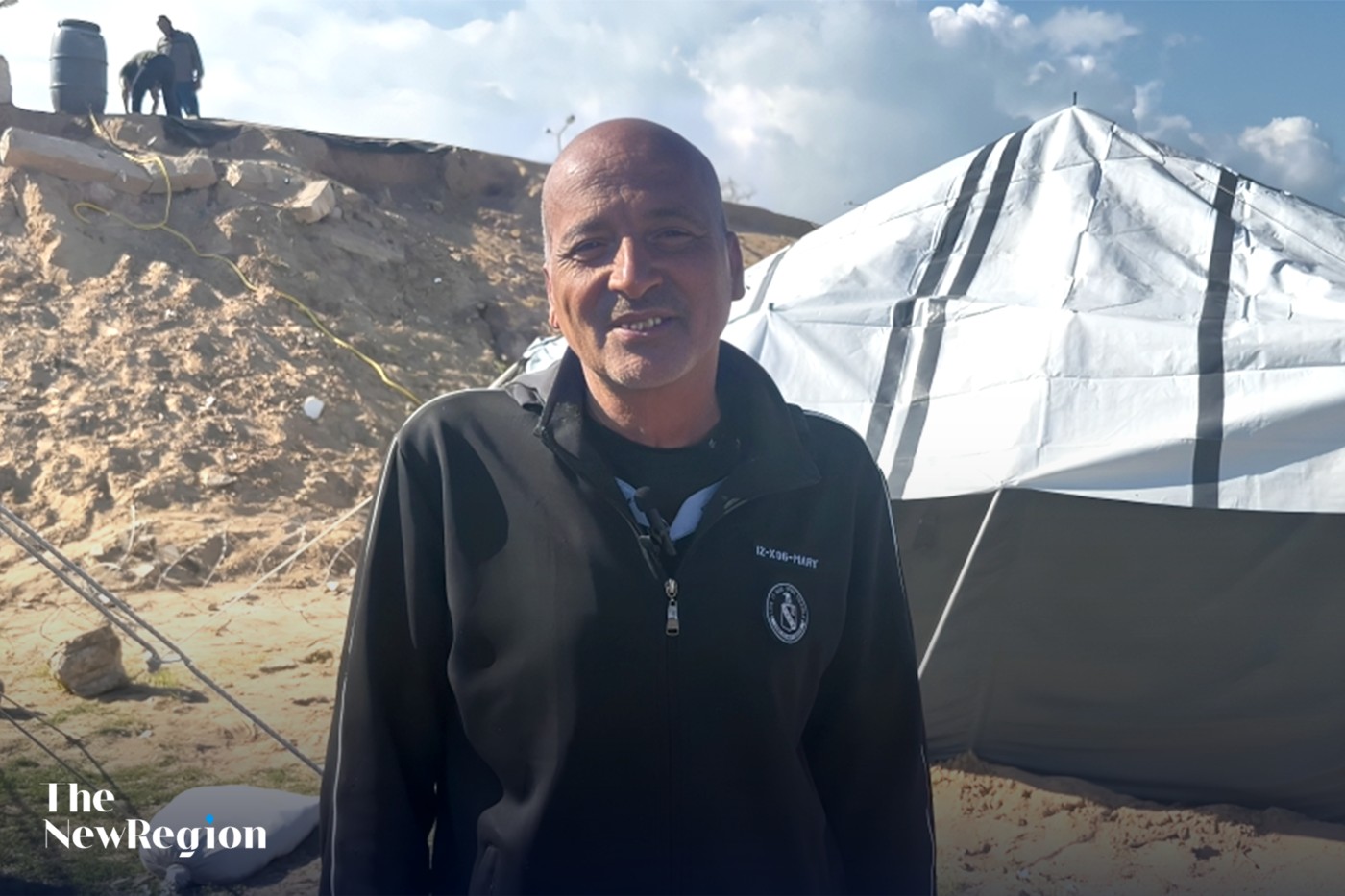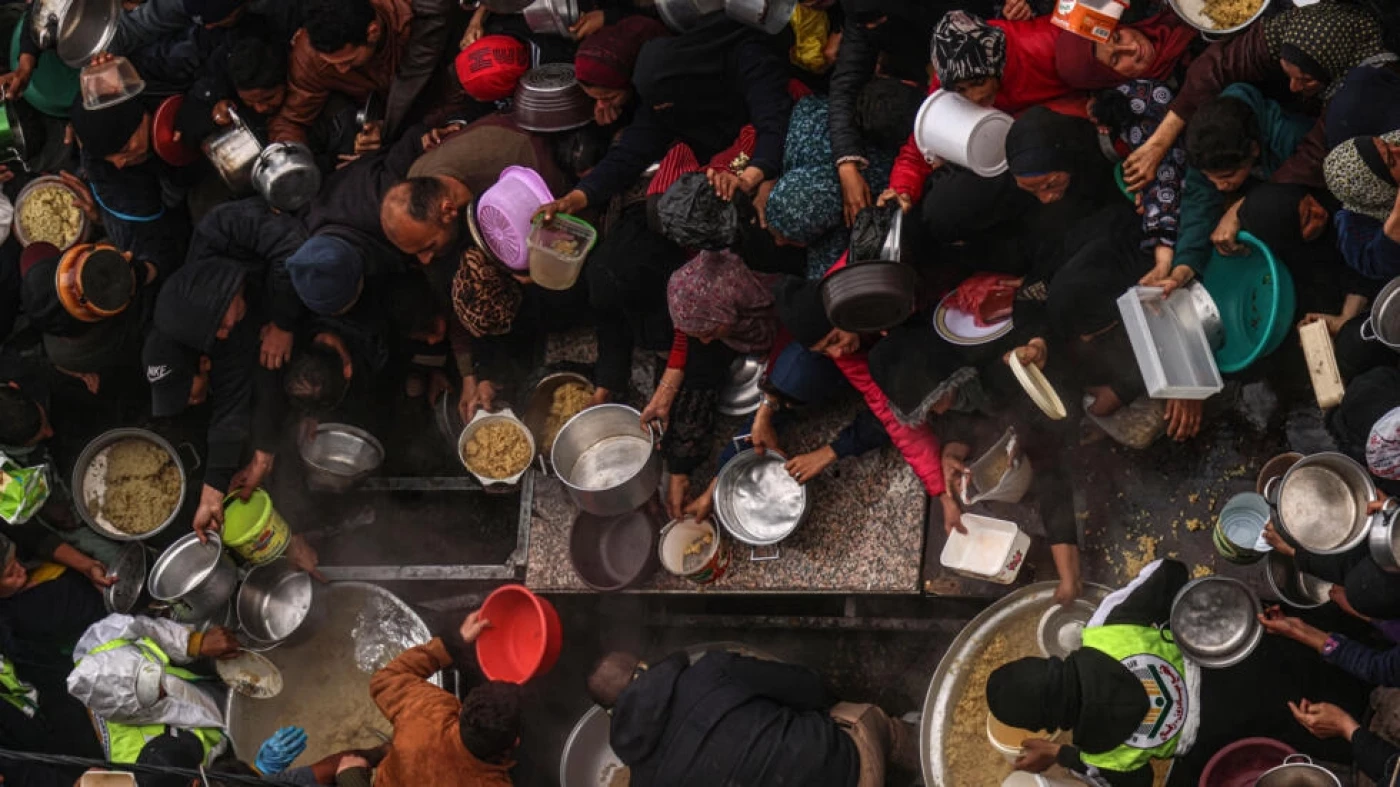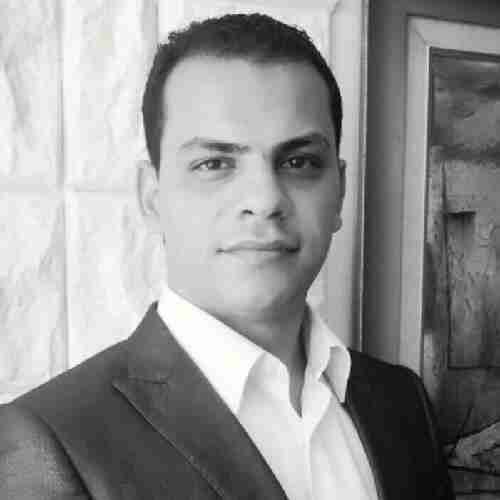RAFAH, Gaza Strip - “Food” and “bread” are the most prevalent words in the tents of displaced Gazans in the city of Rafah on the Egyptian border, who use flour bags to make tents, most of which were damaged by the weather
Entire families live in poor conditions near the border wall separating Palestinian Rafah from Egypt, where the open air has become their only space to spend their day, and they are waiting for the unknown in light of their rejection of being transferred to the Egyptian Sinai, and the impossibility of their return to the northern Gaza Strip.
The border wall has become the only outlet for children in this camp, as they climb over it to play and have fun, while the young men sit on a small hill, looking only at the fence and the tents, without seeing any future ahead of them.
An expected massacre
Israeli Prime Minister Benjamin Netanyahu announced that his army would guarantee “safe passage” for civilians before the expected attack on the city of Rafah in the Gaza Strip, and stressed, “victory is within reach. We will do it. We will control the last Hamas terrorist brigades, and Rafah, which is the last stronghold.”
Hamas also warned of a "massacre" in Rafah, which has become the last refuge for more than a million displaced Palestinians in the southern Gaza Strip, with Israel continuing its heavy bombing and its Prime Minister issuing directives to prepare a "plan to evacuate" civilians from the city.
“We warn of a global catastrophe and massacre that could leave tens of thousands dead and wounded if Rafah Governorate is invaded,” Hamas said.
The city of Rafah is located in the south of the Gaza strip on the border strip separating it from the Egyptian Sinai Peninsula. It is considered the largest city in the strip on the Egyptian border, with an area of 55 square kilometers, and it is about 107 kilometers away from Jerusalem.
The only border crossing between the Gaza Strip and Egypt is located in the city of Rafah, which has been relied upon mainly for decades for bringing aid into the Gaza Strip and removing the injured to receive treatment and travel. The city gained its international fame for this reason, so much so that the crossing’s fame exceeds the fame of the city itself.
During the past decades, dozens of tunnels extended unofficially across the border between Gaza and Egypt, until the Egyptian army demolished them in recent years.
Rejection
Fahmi Abu Eida, an elderly man in Rafah, spoke to The New Region while standing behind a tent surrounded by barbed wire.
“We have been displaced for 45 days. We left northern Gaza to Misrata, then Khan Yunis and then to Rafah at the Egyptian border,” he said. “They told us that this was a safe line.”
"We do not know where to go, and we have only one solution, which is death. Netanyahu threatens to enter Rafah, and we do not know what our future is. We refuse to move to Sinai and we only want to return to northern Gaza, to die there,” he added with confusion and pain.
Abu Eida’s words are no longer strange in light of the tragedies that the Gaza strip witnessed nearly 130 days ago, since the start of the war launched by Israel against the strip, which led to the death of more than 28,000 people, in its latest toll, in addition to the complete destruction of the infrastructure in the strip.
Today, Rafah has become the last refuge for those displaced from the Gaza Strip, as they took refuge in this city, which in 1917 was subject to British rule, who imposed their mandate on Palestine.
In 1948, the Egyptian army entered and took control over it transferring it to Egyptian territory, until it fell into the hands of Israel in 1956.
Its importance throughout history was increased by the passage of the railway line between Cairo and Haifa through its lands, and this line was destroyed after 1967.
Rafah was divided into two parts with barbed border wire, after the Camp David Accords, whereby Egypt regained Sinai.
Following this agreement, the two parts of Rafah were separated, and the area of the part located in Gaza was approximately three times the area of the Egyptian part.
Tayseer Abu Eida, a young man in Rafah camp, who hails from northern Gaza, tells the story of their displacement.
“The displacement began from Jabaliya, where we went to Misrat and they told us it was safe, but we found the Israeli army in front of us,” he told The New Region.
"Then we moved to more than one place until we reached Rafah, and now we hear that the Jews will enter Rafah," he added.
Though what is certain to him, is the fact that they do not want to enter Sinai, nor leave Rafah.
"We will not leave Rafah anymore, nor will we go to Sinai, nor anywhere else, as this is our last place,” he said.
A few days ago, negotiations took place between the mediators of the US, and Israel, in order to reduce the gap between Israel and the “Hamas” movement, allowing the launch of negotiations in Cairo.
Last Saturday, Israel delivered its response to Hamas’ plan regarding the deal to stop the war and exchange prisoners, to Qatar, Egypt, and the United States.


 Facebook
Facebook
 LinkedIn
LinkedIn
 Telegram
Telegram
 X
X



